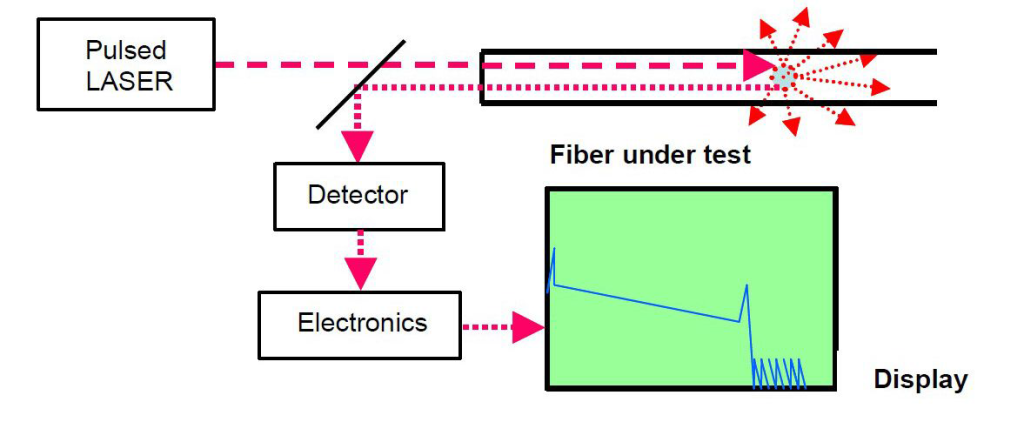A fibre optic cable is a network cable that contains strands of glass fibres inside an insulated casing. They’re designed for high performance data networking and telecommunications. Fibre optic cable carry communication signals using pulses of light, faster than copper cabling which uses electricity. They are becoming the most significant communication media in data centre. Then how much do you know about them? This post serves as a guide for beginners.
The three basic elements of a fibre optic cable are the core, cladding and coating. Core is the light transmission area of the fibre, either glass or plastic. The larger the core, the more light that will be transmitted into the fibre. The function of the cladding is to provide a lower refractive index at the core interface, causing reflection within the core. Therefore the light waves can be transmitted through the fibre. Coatings are usually multi-layers of plastics applied to preserve fibre strength, absorb shock and provide extra fibre protection.

Generally, there are two basic types of fibre optic cables: single mode fibre (SMF) and multimode fibre (MMF). Furthermore, multimode fibre cores may be either step index or graded index.

Single mode optical fibre is a single strand of glass fibre with a diametre of 8.3 to 10 microns that has one mode of transmission. The index of refraction between the core and the cladding changes less than it does for multimode fibres. Light thus travels parallel to the axis, creating little pulse dispersion. It’s often used for long-distance signal transmission.
Step index multimode fibre has a large core, up to 100 microns in diametre. As a result, some of the light rays that make up the digital pulse may travel a direct route, whereas others zigzag as they bounce off the cladding. These alternative pathways cause the different groupings of light rays to arrive separately at a receiving point. Consequently, this type of fibre is best suited for transmission over short distances.
Graded index fibres are commercially available with core diametres of 50, 62.5 and 100 microns. It contains a core in which the refractive index diminishes gradually from the centre axis out toward the cladding. The higher refractive index at the centre makes the light rays moving down the axis advance more slowly than those near the cladding.
Single mode fibres usually has a 9 micron core and a 125 micron cladding (9/125µm). Multimode fibres originally came in several sizes, optimised for various networks and sources, but the data industry standardized on 62.5 core fibre in the mid-80s (62.5/125 fibre has a 62.5 micron core and a 125 micron cladding. It’s now called OM1). Recently, as gigabit and 10 gigabit networks have become widely used, an old fibre design has been upgraded. 50/125 fibre was used from the late 70s with lasers for telecom applications. 50/125 fibre (OM2) offers higher bandwidth with the laser sources used in the gigabit LANs and can allow gigabit links to go longer distances. Laser-optimised 50/125 fibre (OM3 or OM4) today is considered by most to be the best choice for multimode applications.
The two basic cable designs are loose-tube cable, used in the majority of outside plant installations, and tight-buffered cable, primarily used inside buildings.

The modular design of loose-tube cables typically holds up to 12 fibres per buffer tube with a maximum per cable fibre count of more than 200 fibres. Loose-tube cables can be all dielectric or optionally armored. The modular buffer-tube design permits easy drop-off of groups of fibreers at intermediate points, without interfering with other protected buffer tubes being routed to other locations.
Tight-buffered cables can be divided into single fibre tight-buffered cables and multi-fibre tight-buffered cables. single fibre tight-buffered cables are used as pigtails, patch cords and jumpers to terminate loose-tube cables directly into opto-electronic transmitters, receivers and other active and passive components. While multi-fibre tight-buffered cables also are available and are used primarily for alternative routing and handling flexibility and ease within buildings.
While there are many different types of fibre connectors, they share similar design characteristics. Simplex vs. duplex: Simplex means 1 connector per end while duplex means 2 connectors per end. The following picture shows various connector styles as well as characteristics.

Ultimately, what we’ve discussed is only the tip of the iceberg. If you are eager to know more about the fibre optic cable, either basics, applications or purchasing, please visit www.fs.com for more information.






